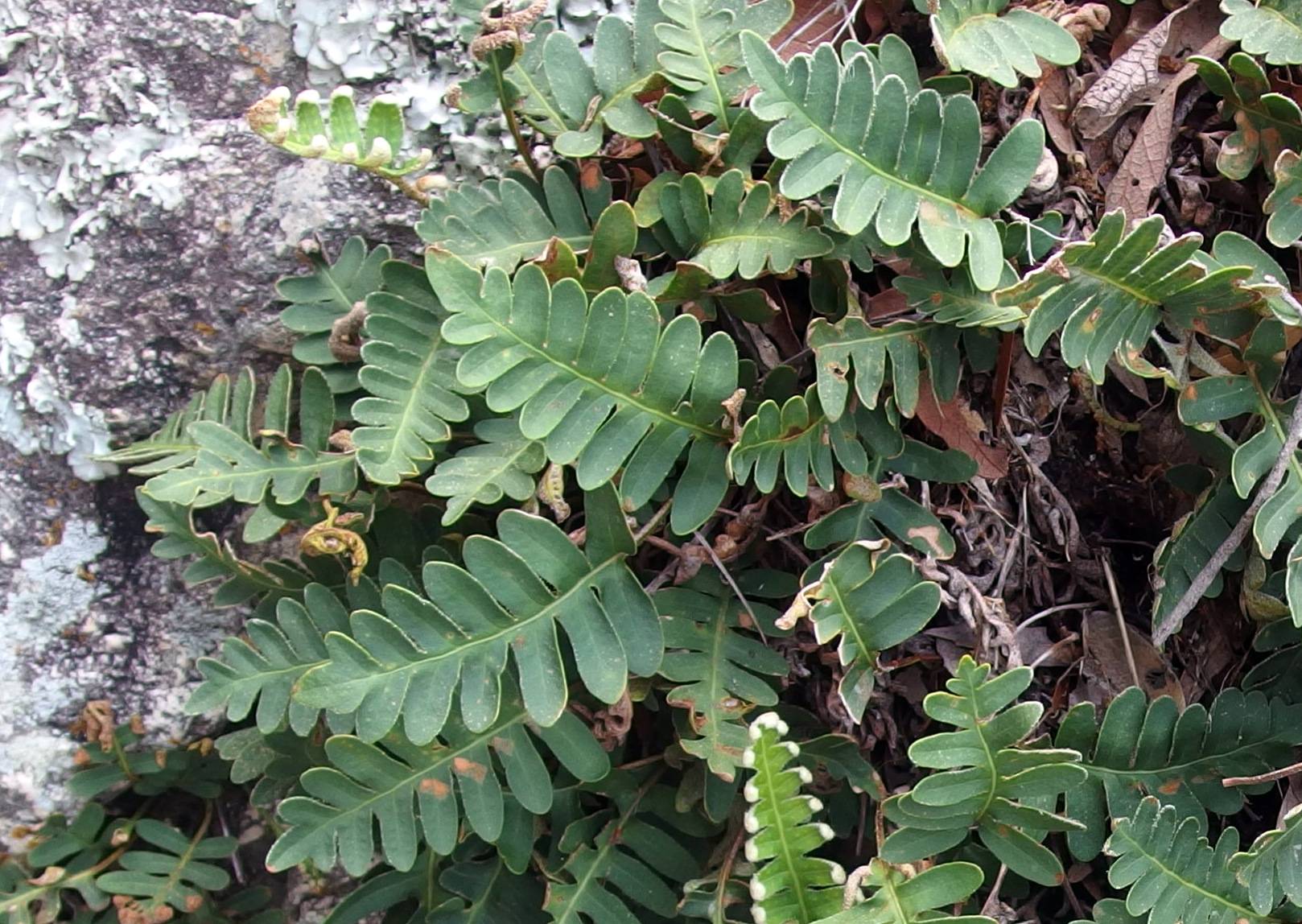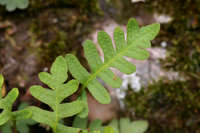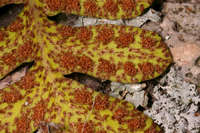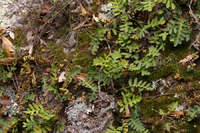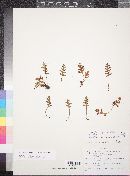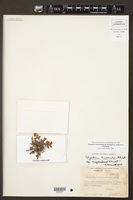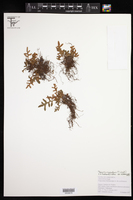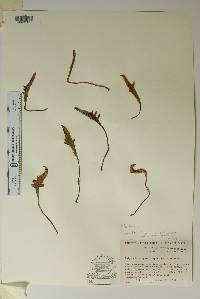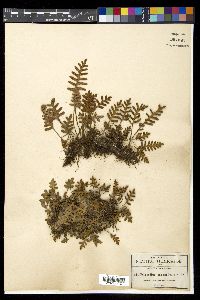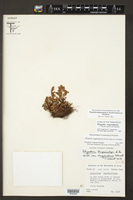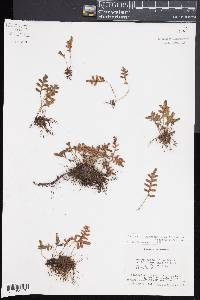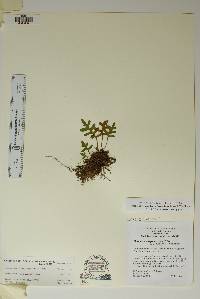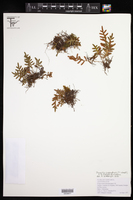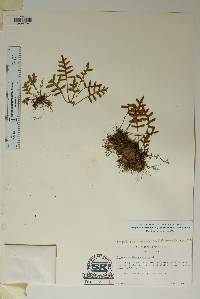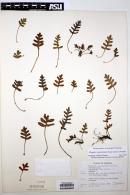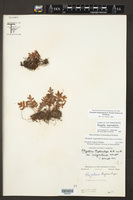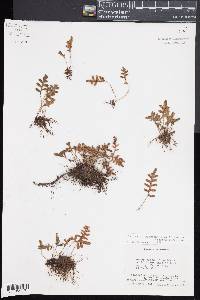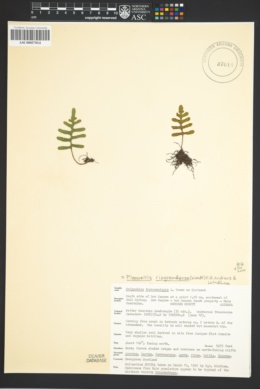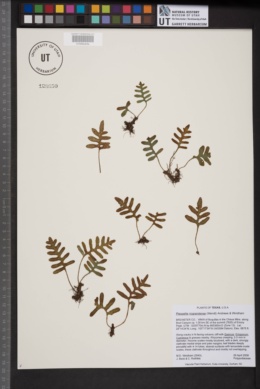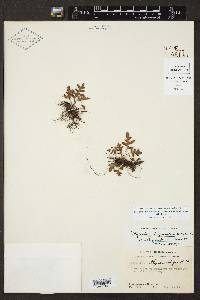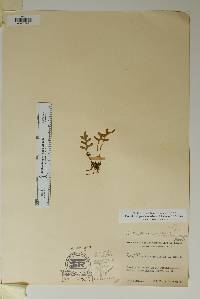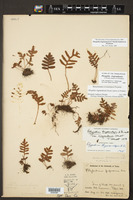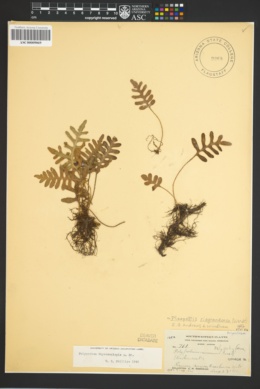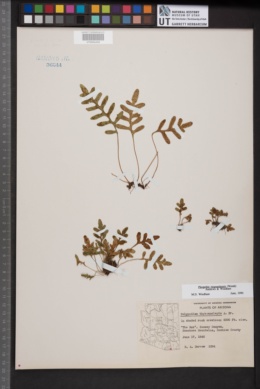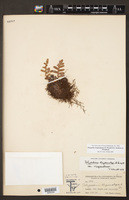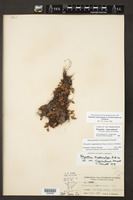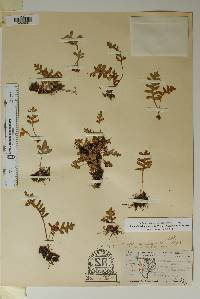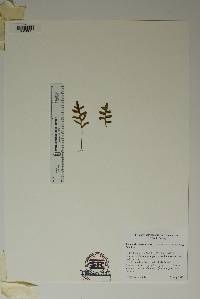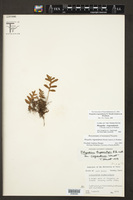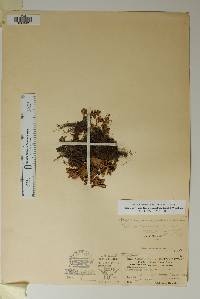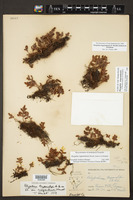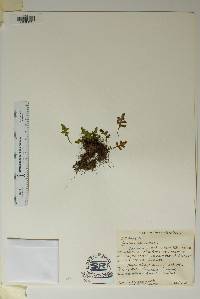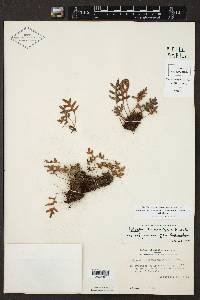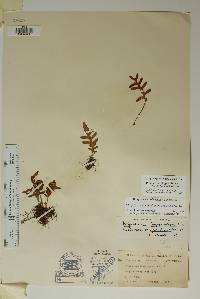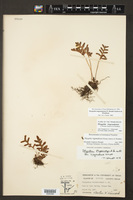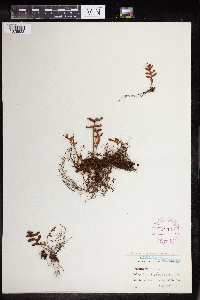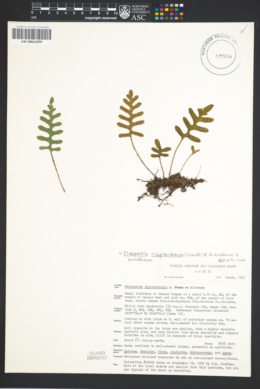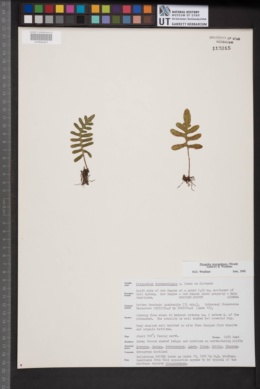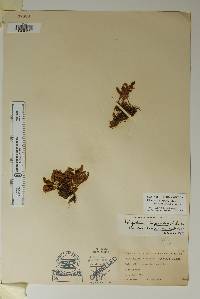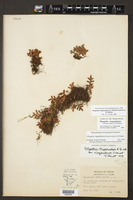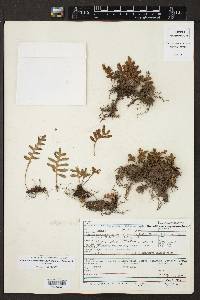Pleopeltis riograndensis
|
|
|
|
Family: Polypodiaceae
Rio Grande scaly polypody, more...Rio Grande Scaly-Polypody, Rio Grande scalypolypody
[Polypodium thyssanolepis var. riograndense T. Wendt] |
Stems short-creeping, sparingly branched, 2--3 mm diam.; scales subulate to lanceolate-acuminate, centrally clathrate with cell luminae large and clear, surfaces glabrous, margins lacerate-ciliate. Leaves to 20 cm, strongly hygroscopic. Petiole grooved, otherwise round in cross section, sparsely scaly; scales rarely overlapping, margins denticulate to ciliate. Blade triangular-oblong to ovate, deeply pinnatifid, to 5 cm wide, moderately scaly abaxially, glabrous adaxially; scales concolored to obscurely bicolored, usually dark reddish brown throughout, broadly ovate-lanceolate, clathrate, more than 0.5 mm wide, margins fringed-ciliate. Venation mostly free with occasional areoles, never more than 1 included veinlet in fertile areoles. Sori round, discrete, surficial to shallowly embossed, soral scales attached at periphery of receptacle. Spores smooth with scattered spheric deposits on surface, 60--74 µm. 2 n = 148. Sporulating summer--fall. Growing on rocky slopes and ledges, and in crevices, usually in moist, shaded canyons; 1500--2500 m; Ariz., Texas; n Mexico. In the past Pleopeltis riograndensis has been treated as a variety of P . thyssanolepis , but it differs from the latter species in that the petiole and leaf are only sparsely scaly rather than densely so, the blade scales are mostly ovate or ovate-lanceolate rather than nearly spheric, the venation is mostly free rather than mostly areolate, and the basal segments of the blade are alternate rather than opposite to nearly opposite.
RHIZOMES: 2-3 mm in diameter, usually short-creeping, few-branched, the scales 2.5-3 mm long, subulate to lanceolate, acuminate at the tip, the central stripe dark brown with strongly clathrate cells, surrounded by light brown nonclathrate cells, the margins fimbriate-ciliate. LEAVES: 3-20 cm long. PETIOLES: longitudinally grooved adaxially, green, sometimes brown to purplish brown at the base, sparsely to moderately scaly, the scales grading from like those of the rhizome to those of the blade. BLADES: 1-5 cm wide, oblong-triangular to ovate, with 2-10 lateral lobes, the proximal lobes appearing alternate along the midrib, the lobes 6-25 mm long, 2-8 mm wide, the abaxial scales 1-3 mm long, mostly narrowly ovate, more or less concolorous, reddish brown, clathrate, the margins fimbriate-ciliate. SPORES: 60-74 m long, the surface smooth with scattered globose deposits. 2n = 148. NOTES: Shaded ledges and crevices of rock outcrops of canyons, usually on granite, quartzite, or rhyolite: Cochise, Pima, Santa Cruz cos. (Fig. 1A); 1250-2100 m (4100-6900 ft); AZ, TX; n Mex. Earlier authors referred to this taxon as Polypodium thyssanolepis. That name (in the strict sense) refers to a Mexican species with leaves having sparser scales that are broadly ovate to nearly circular, more regularly areolate venation, and more or less opposite proximal lobes. REFERENCES: Yatskievych, G. and M.D. Windham. Vascular Plants of Arizona: Polypodiaceae. CANOTIA 5 (1): 34-38, 2009. General: Widely spaced leaves emerging from rhizomes 2-3 mm in diameter, with scales 2.5-3 mm long, subulate to lanceolate, acuminate at the tip, with a central stripe of dark brown and fimbriate-ciliate margins. Leaves: Evergreen and widely spaced, 3-20 cm long on petioles that are longitudinally grooved above, green to brown or purplish brown at base, sparsely to moderately scaly, the blades 1-5 cm wide, oblong to triangular and ovate with 2-10 lateral lobes, the lower lobes look alternate along midrib, the lobes 6-25 mm long, 2-8 mm wide, with scales 1-3 mm long beneath, these narrowly ovate, reddish brown and with margins fimbriate-ciliate. Sporangia: Surficial sori or in shallow pits in the blade surface. Ecology: Found along shaded crevices or ledges, or along rock outcrops in canyons, usually on granite, quartzite, or rhyolite from 4,000-7,000 ft (1219-2134 m). Notes: The thicker lobed leaves with its conspicuous scales under the leaf help to identify this fern. Etymology: Pleopeltis is of uncertain origins, but riograndensis means of or from the Rio Grande. Sources: Yatskievych and Windham 2009 Yatskievych and Windham 2009 Common Name: Rio Grande scaly polypody General: Widely spaced leaves emerging from rhizomes 2-3 mm in diameter, with scales 2.5-3 mm long, subulate to lanceolate, acuminate at the tip, with a central stripe of dark brown and fimbriate-ciliate margins. Leaves: Evergreen and widely spaced, 3-20 cm long on petioles that are longitudinally grooved above, green to brown or purplish brown at base, sparsely to moderately scaly, the blades 1-5 cm wide, oblong to triangular and ovate with 2-10 lateral lobes, the lower lobes look alternate along midrib, the lobes 6-25 mm long, 2-8 mm wide, with scales 1-3 mm long beneath, these narrowly ovate, reddish brown and with margins fimbriate-ciliate. Sporangia: Surficial sori or in shallow pits in the blade surface. Ecology: Found along shaded crevices or ledges, or along rock outcrops in canyons, usually on granite, quartzite, or rhyolite from 4,000-7,000 ft (1219-2134 m). Notes: The thicker lobed leaves with its conspicuous scales under the leaf help to identify this fern. Ethnobotany: Unknown Etymology: Pleopeltis is of uncertain origins, but riograndensis means of or from the Rio Grande. Synonyms: Polypodium thyssanolepis var. riograndense Editor: SBuckley, 2010 |

